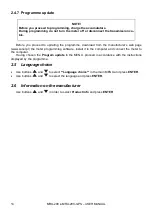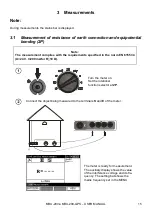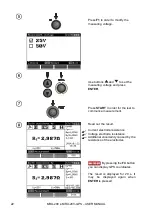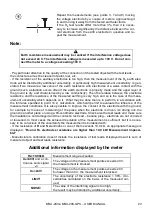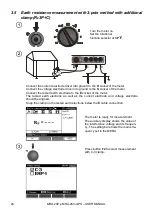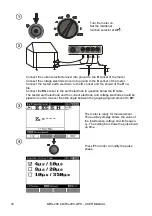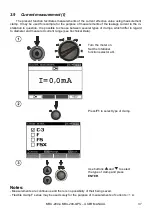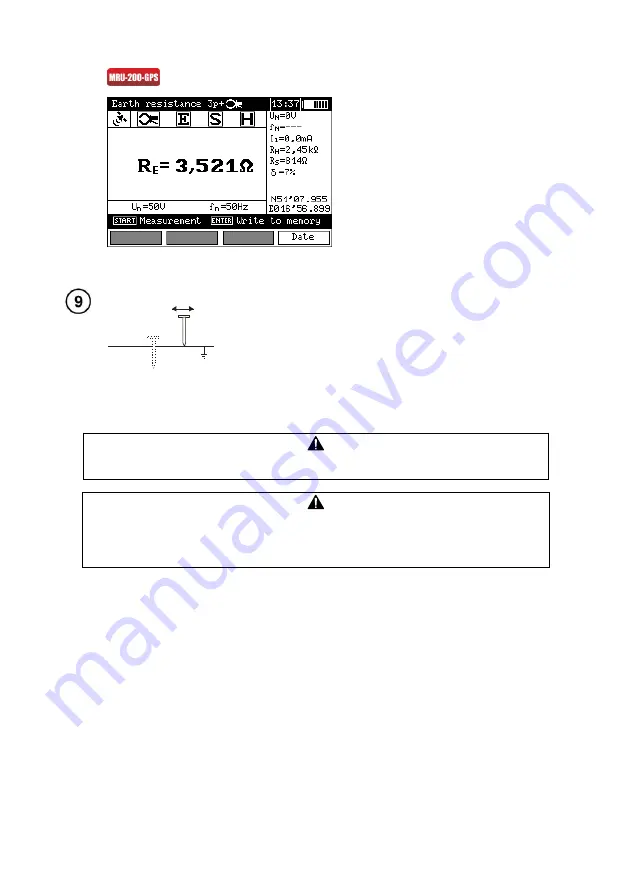
MRU-200
● MRU-200-GPS – USER MANUAL
26
By pressing the
F4
button you can display GPS coordinates.
The result is displayed for 20 s.
It may be displayed again when
ENTER
is pressed.
S
Repeat the measurements (see points 2 and 5) moving the
voltage electrode by a couple of meters: approaching it to and
moving it away from the tested earth electrode.
If the R
E
test results differ more than 3%, then it is necessary
to increase significantly the distance between the current elec-
trode from the earth electrode in question and repeat the gaug-
ing.
Notes:
Flexible clamp must not be used for this measurement.
Earth resistance measurement may be realized if the interference voltage does
not exceed 24 V. The interference voltage is measured up to 100 V. Do not con-
nect the meter to a voltage exceeding 100 V.
- The clamps are not the part of meter basic accessories, you have to purchase them apart.
- The clamp must be calibrated before it is used for the first time. It may be periodically calibrated in
order to avoid the influence of the ageing elements upon the resolution of measurements. The clamp
calibration option is in the
MENU
.
- Pay particular attention to the quality of the connection of the tested object with the test leads
– the
contact area must be cleaned of paint, rust, etc.
- If the resistance of the auxiliary electrodes is too high, then the measurement of the R
E
earth elec-
trode will be distorted by additional uncertainty. A particularly high measurement uncertainty is gen-
erated if we measure a low value of the earth resistance with electrodes of a weak contact with the
ground (such a situation occurs often if the earth electrode is properly made and the upper layer of
the ground is dry and characterised by a low conductivity). Then the relation between the electrode
resistance and the resistance of the measured earthing is very high, and so is the case of the meas-
urement uncertainty which depends on it. What may be done then is to perform, in accordance with
the formulae specified in point 10.2, calculations, which will permit to evaluate the influence of the
measurement conditions. It is also possible to improve the contact of the electrode with the ground,
for example by means of moistening of the place when the electrode is driven, its driving into the
ground in another place or using a 80-centimetre electrode. Check also the test leads and make sure



